Achaemenids
Q13527812Achaemenids (Old Persian: Hakhâmanišiya): royal dynasty of ancient Persia, named after its legendary founder Achaemenes (Hakhâmaniš).
Origins
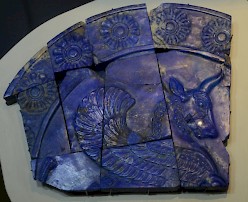
According to the official story, the Achaemenid or Persian empire was founded by Cyrus the Great, who became king of Persis in 559 BCE and defeated his overlord Astyages of Media in 550. The size of the Median empire is not exactly known, but it seems to have included Cappadocia and Armenia in the west and Parthia, Aria and Hyrcania in the east.
Cyrus added Lydia (perhaps in 547, but probably later) and Bactria. He reportedly campaigned in Sogdia and India as well. It is certain that he captured the city of Babylon in 539. His residence was Pasargadae, built on the site where he had defeated Astyages. In 530, Cyrus died, perhaps in a campaign against the Massagetae, a Scythian tribe.
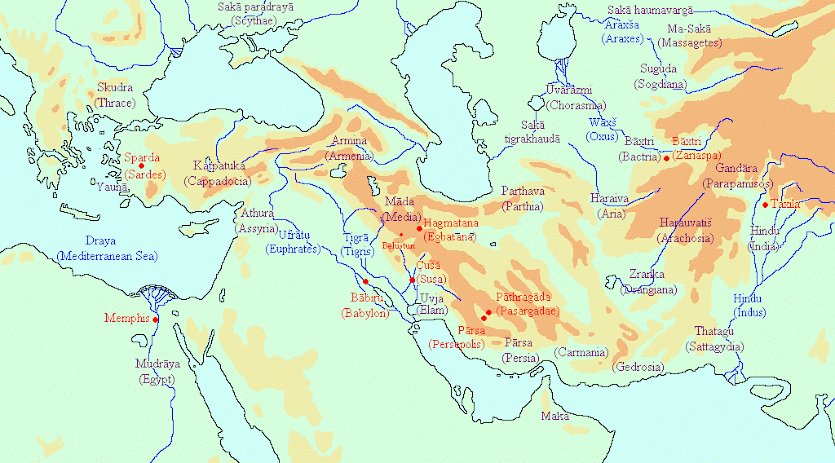
Cyrus was succeeded by his son Cambyses, who conquered Egypt (525). Three years later, civil war broke out when his courtier Gaumâta revolted. Cambyses returned home but died in Syria.
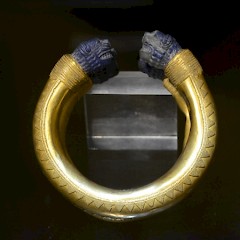
A distant relative of Cambyses, the Achaemenid prince Darius, however, killed Gaumâta. After the second coup in one year, many provinces of the Achaemenid empire revolted; the most important rebellions were those of Phraortes of Media and Nidintu-Bêl of Babylonia. After nineteen battles in one single year, tranquillity returned to the Achaemenid empire. Darius described his victory in the Behistun inscription, in which he presents himself as the faithful servant of the Persian supreme god Ahuramazda. (We do not know whether the Achaemenids adhered to the teachings of the Bactrian prophet Zarathustra, although later Persian dynasties certainly were Zoroastrians.)
It should be stressed that there is not a single piece of contemporary evidence that calls Cyrus or Cambyses Achaemenids. (The texts that do, were written during the reign of Darius.) It is therefore possible that there was no link between the two first kings of the Persian Empire and the family of Darius.
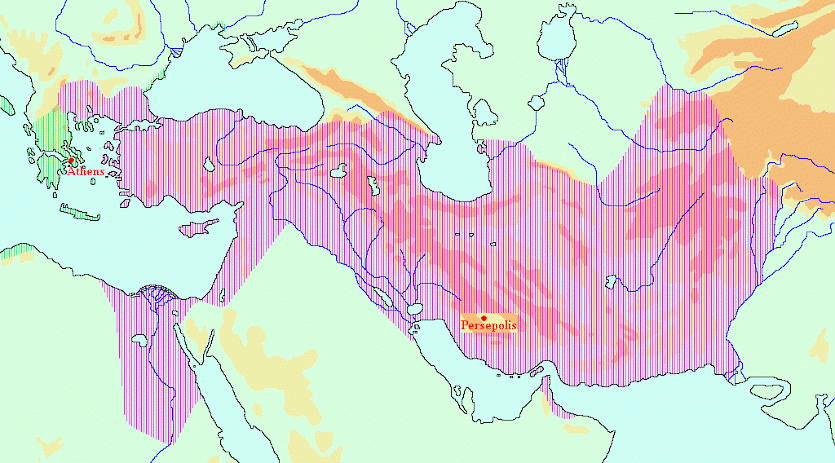
Darius reorganized the empire and created satrapies, territorial units that also served as tax districts. He also founded Persepolis, where many administrative texts were discovered, and built a palace in Susa. Capable generals like Mardonius added new countries to the empire, which now extended from Macedonia in the west to Pakistan in the east, and from the river Syrdar'ya and the Caucasus mountains in the north to the Libyan desert and the Persian Gulf in the south.
Fifth Century
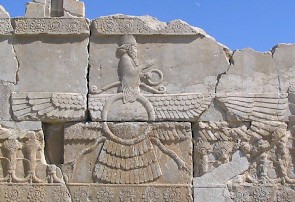
During the reign of Darius' son Xerxes, the expansion of the empire came to an end. Gandara and Taxila in the far east were lost. The Greek researcher Herodotus of Halicarnassus describes in his Histories Xerxes' ill-fated campaign against the Greeks (480-479). In the west, Macedonia, Thrace, and several Greek towns in Asia Minor became independent. However, Xerxes was able to keep the empire intact during the transition from an expansionist to a more static organization.
Under his successors Artaxerxes I Makrocheir (465-424) and Darius II Nothus (423-404), the empire remained as it was: the strongest power on earth. In several regions (e.g., Asia Minor) we detect strong Persian cultural influence. In Greece, the Athenians copied many institutions of their powerful neighbor. They were not the only ones. To the north of the Achaemenid empire, the Cadusians learned how to organize itself. The war against this tribe was to flare up several times in the fourth century.
Fourth Century
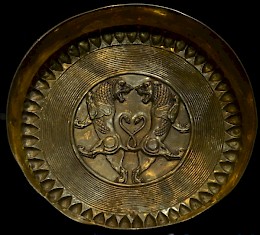
After the death of Darius II, civil war broke out between Artaxerxes II Mnemon and his younger brother Cyrus, who marched with an army of Greek mercenaries to the east, but was defeated at Cunaxa near Babylon. This event was important, because it was now obvious that the Persian infantry was no match to the Greek hoplites. The Achaemenids developed a policy of dividing the Greek powers (Athens, Sparta, Thebes) and were able to strengthen their grip on Asia Minor, where the Greek towns were again subdued.
On the other hand, Egypt became independent under Amyrtaeus. Several times, the Persians tried to reconquer the former satrapy, usually employing Greek mercenaries. (A message that the Egyptians copied.) These attempts came to nothing until two generals of king Artaxerxes III Ochus (358-338), Bagoas and Mentor of Rhodes, were finally successful and forced the last pharaoh of independent Egypt, Nectanebo II, to flee (342/341).
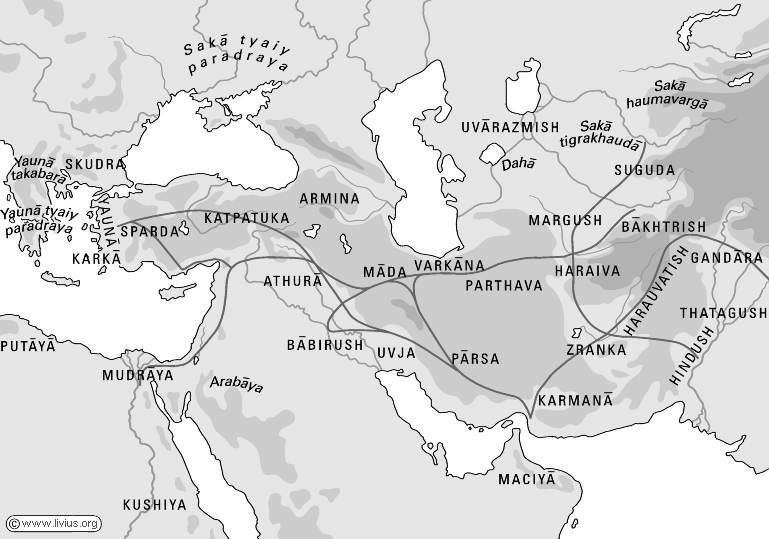
Demise
After the death of Artaxerxes III, there was a crisis in the Achaemenid dynasty. The new king was Artaxerxes IV Arses, but after a brief reign, he was replaced by a distant relative, Darius III Codomannus (336-330). Several satrapies revolted, but Darius immediately put down these rebellions. However, in the meantime, the Macedonian king Alexander the Great had invaded Asia Minor. Although Darius sent out a Greek mercenary leader, Memnon of Rhodes, and a Persian admiral, Pharnabazus, the Macedonians were able to reach Syria, where they defeated Darius at Issus (333).
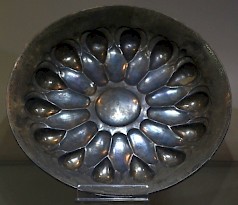
The Persians built a new army, but two years later, they were defeated at Gaugamela. Darius was murdered (330) and Alexander started to reign as an Achaemenid king, keeping the empire together. After Alexander's death in Babylon (11 June 323), his empire was divided into three parts: Macedonia was ruled by Antipater, Ptolemy reconstituted the Egyptian kingdom, and Seleucus ruled the Asian parts of Alexander's realms. In fact, the Seleucid empire was a continuation of the Achaemenid empire.
A list of Achaemenid kings is here.
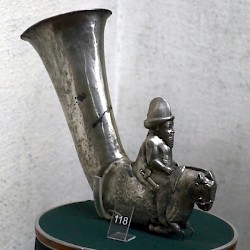 Erebuni, Achaemenid Rhyton |
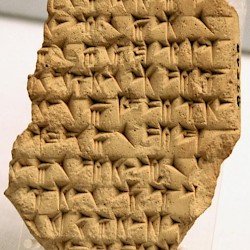 Susa, Inscription DSe |
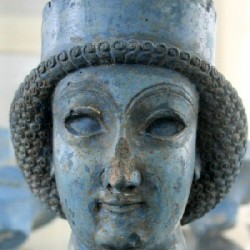 Persepolis, Portrait of an Achaemenid woman or beardless prince |
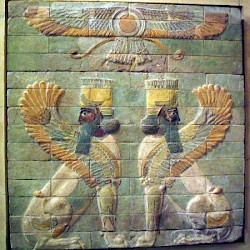 Susa, Soldiers' Relief, Sphinxes |